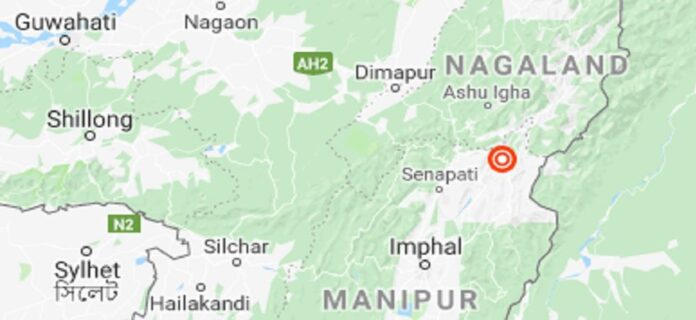Residents of Manipur and Nagaland experienced a momentary jolt as a mild earthquake rattled parts of the two northeastern states. The tremor, though relatively minor, served as a stark reminder of the unpredictable nature of seismic activity and the need for preparedness and resilience in vulnerable regions. While no significant damage was reported, the incident underscored the importance of monitoring and mitigating seismic risks in earthquake-prone areas like Manipur and Nagaland.
The earthquake, with its epicenter located in the border region between Manipur and Nagaland, had a magnitude of around 4.5 on the Richter scale. Although considered a mild tremor, it was felt by residents in several districts of both states, triggering brief moments of panic and anxiety. While earthquakes are not uncommon in the region due to its proximity to the seismically active Himalayan belt, each instance serves as a sobering reminder of the potential risks and vulnerabilities faced by local communities.
Fortunately, the earthquake did not cause any significant damage to infrastructure or loss of life. However, it served as a wake-up call for residents and authorities alike to remain vigilant and prepared for future seismic events. In recent years, both Manipur and Nagaland have taken steps to improve their disaster management capabilities and enhance resilience to natural hazards, including earthquakes. This incident underscores the importance of continuing these efforts and investing in proactive measures to mitigate seismic risks.
One of the key challenges in earthquake-prone regions like Manipur and Nagaland is the vulnerability of existing infrastructure to seismic activity. Many buildings and structures in these areas may not be designed or constructed to withstand the forces exerted by earthquakes, increasing the risk of damage and collapse during a seismic event. As such, there is a pressing need for retrofitting and strengthening of critical infrastructure, including schools, hospitals, and government buildings, to ensure their resilience to earthquakes.
Moreover, public awareness and preparedness are essential components of effective earthquake risk reduction strategies. Education campaigns and community drills can help raise awareness about earthquake safety measures and empower residents to respond appropriately during an earthquake. By promoting a culture of preparedness and resilience, Manipur and Nagaland can enhance their ability to mitigate the impact of earthquakes and minimize loss of life and property.
In addition to physical infrastructure and preparedness measures, seismic monitoring and early warning systems play a crucial role in earthquake risk management. Timely detection and dissemination of earthquake-related information can provide authorities and residents with valuable time to take preventive actions and mitigate potential risks. By investing in advanced seismic monitoring technologies and establishing robust early warning systems, Manipur and Nagaland can improve their capacity to respond effectively to earthquakes and protect vulnerable communities.
Furthermore, earthquakes often have far-reaching socio-economic impacts, particularly in rural and remote areas where livelihoods are closely tied to agriculture and natural resources. In the event of an earthquake, disruptions to infrastructure, transportation, and communication networks can hinder access to essential services and markets, exacerbating vulnerabilities and undermining socio-economic resilience. Therefore, efforts to strengthen disaster resilience must be accompanied by initiatives to promote sustainable development and livelihood diversification in earthquake-prone areas.
The recent earthquake serves as a timely reminder of the need for sustained investment in disaster risk reduction and resilience-building efforts in Manipur and Nagaland. While the tremor was relatively mild and caused minimal damage, it underscores the unpredictable nature of seismic activity and the importance of preparedness and mitigation measures. By prioritizing earthquake resilience and adopting a multi-sectoral approach to disaster risk management, Manipur and Nagaland can enhance their ability to withstand future seismic events and safeguard the well-being of their residents.
However, the mild earthquake felt in parts of Manipur and Nagaland serves as a wake-up call for enhanced earthquake preparedness and resilience-building efforts in the region. While the tremor did not result in significant damage, it highlights the importance of investing in seismic monitoring, infrastructure resilience, public awareness, and early warning systems to mitigate the impact of earthquakes. By working collaboratively and proactively to address seismic risks, Manipur and Nagaland can build safer, more resilient communities that are better equipped to withstand the challenges posed by natural hazards.




